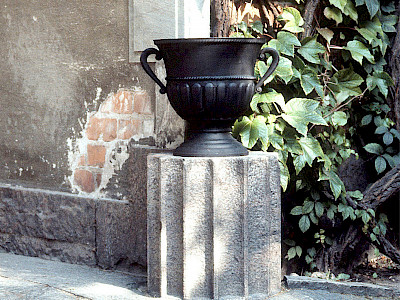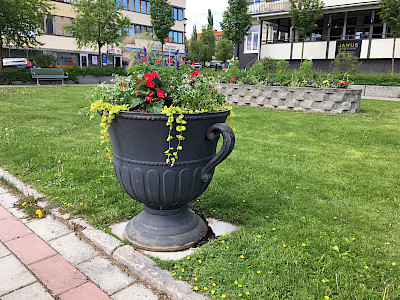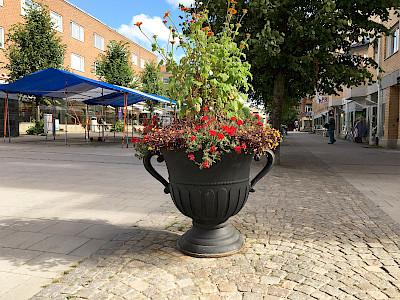Classical Cast-iron
Urn
This elegant cast-iron planter mimics the style of classical Greek urns. Ornamental urns have decorated formal gardens since antiquity, adding a note of elegant craftsmanship to the environments around them. This planter is a perfect complement to traditional gardens and period architecture. It also complements historic districts, classic courtyards and public parks.



